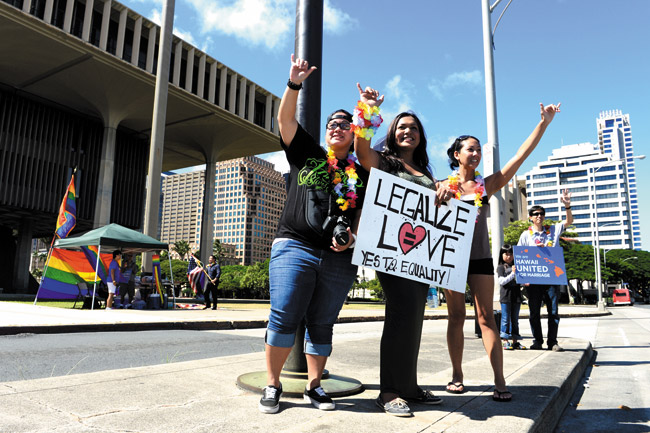Lessons To Learn From Controversy
I will put the issue of marriage equality to rest with a few thoughts.
The special session was grueling. For all who insisted that the work could and should be done in regular session, I say take a look at what went down. There is no way a bill this controversial could have survived the regular session. There were too many people, too many huge and noisy demonstrations, too much passion and emotion. It would have sucked every bit of air from any other issue. Opponents screamed that this issue was too important to be relegated to special session. I say it was too important not to be.
The world watched us, and what they saw wasn’t pretty. Mobs of people bused in by churches, screaming, “Let the people vote,” for hours on end. The anti-marriage equality National Organization for Marriage was involved heavily in shaping the opposition position. This is from the Take Action page on NOM’s website regarding what words to use in testimony: “If this bill is passed, anyone who refuses to support same-sex marriage will be labeled a bigot and a hater. For adults, that may mean severe consequences affecting their ability to earn a living, practice a profession and even raise a family. Our schoolchildren will be taught that they have the choice of marrying anyone regardless of sex, even if that teaching squarely conflicts with what we teach our children in our homes and churches. They will be led to believe that their own parents or pastors are outdated bigots and haters simply because they are trying to raise their kids with their own traditional beliefs!”
I listened to hours of the testimony and heard these arguments presented over and over and over. Lawmakers assured people repeatedly the bill would protect their religious freedoms, that it had nothing to do with what is taught in schools, that they couldn’t be fired from their jobs for their beliefs. Didn’t matter. The talking points continued.
The ruckus at the Capitol didn’t bother me. Democracy can get loud and boisterous at times. It’s natural and (usually) healthy.
What did make me cringe were the expressions of intolerance, bigotry and hatred aimed at people who only seek to be treated with equality and respect.
Renea Stewart, whom I have profiled in this column along with her partner, Lisa Veneri, was at the Capitol for hours Wednesday when the House took SB1 up for a second reading.
She says, “I felt like it could get violent.”
She describes how opponents with bullhorns would turn the music way up when supporters tried to speak. If someone walked by who was for marriage equality, some of the protestors would push them with their signs, even hitting them with megaphones. She saw one person walk over to a stack of pro-marriage signs, take them and rip them up.
Stewart says three office managers of lawmakers who intended to vote “yes” told her they were afraid – not only for the safety of the outnumbered supporters, but also for their bosses and for themselves.
“People had no problem,” Stewart says, “shoving in your personal space and being very loud and intimidating.”
To be fair, there was some bad behavior on the supporters’ side, too. Some did lose their cool and push back. But Stewart and others in their group tried to take them aside and remind them to calm down. They knew they had to be peaceful at all times in order to make their point.
The epic battle over marriage rights showcased how social media have changed the game. Both sides used Facebook to organize. When something happened at the Capitol, the word got out immediately, allowing quick changes to strategies and “battle” plans.
On Wednesday, when things got really heated, there were no streams on TV or the Internet for people to watch. (And why the heck not? It was an important day and they should have been there.) What happened at the Capitol – the good, the bad, the ugly – would have gone unnoticed by most of the public in the days before the advent of social media. That’s because we would only have known what was presented to us in snippets on the evening news or in print the next day.
But now – now we have Twitter. And on that emotional, tumultuous day, its value became crystal clear. The play-by-play tweets from the news organizations and from individuals, which included pictures and short videos, kept us informed in real time. Remarkable.
It was pictures on Twitter and Facebook that first showed the anti-marriage protesters moving in on and drowning out a small group of pastors and faith leaders from churches that support equality.
Tweeted videos let us see and hear the cacophony, the dancing, the sign-waving, the screaming, the jubilation and the disappointment.
But only those who were there could fully appreciate the fear.
Stewart says that made her sad.
“I thought Hawaii was progressive. And we’re a melting pot! Yet here we are.
“Our team, your team … it shouldn’t be that way. We should all be on the same team.”
Being on the same team doesn’t mean we all agree with one another. But it does mean we work together. We have enshrined in our great Constitution protections for all, regardless of minority status, race or religion.
Can’t we please remember that and start the healing now?






